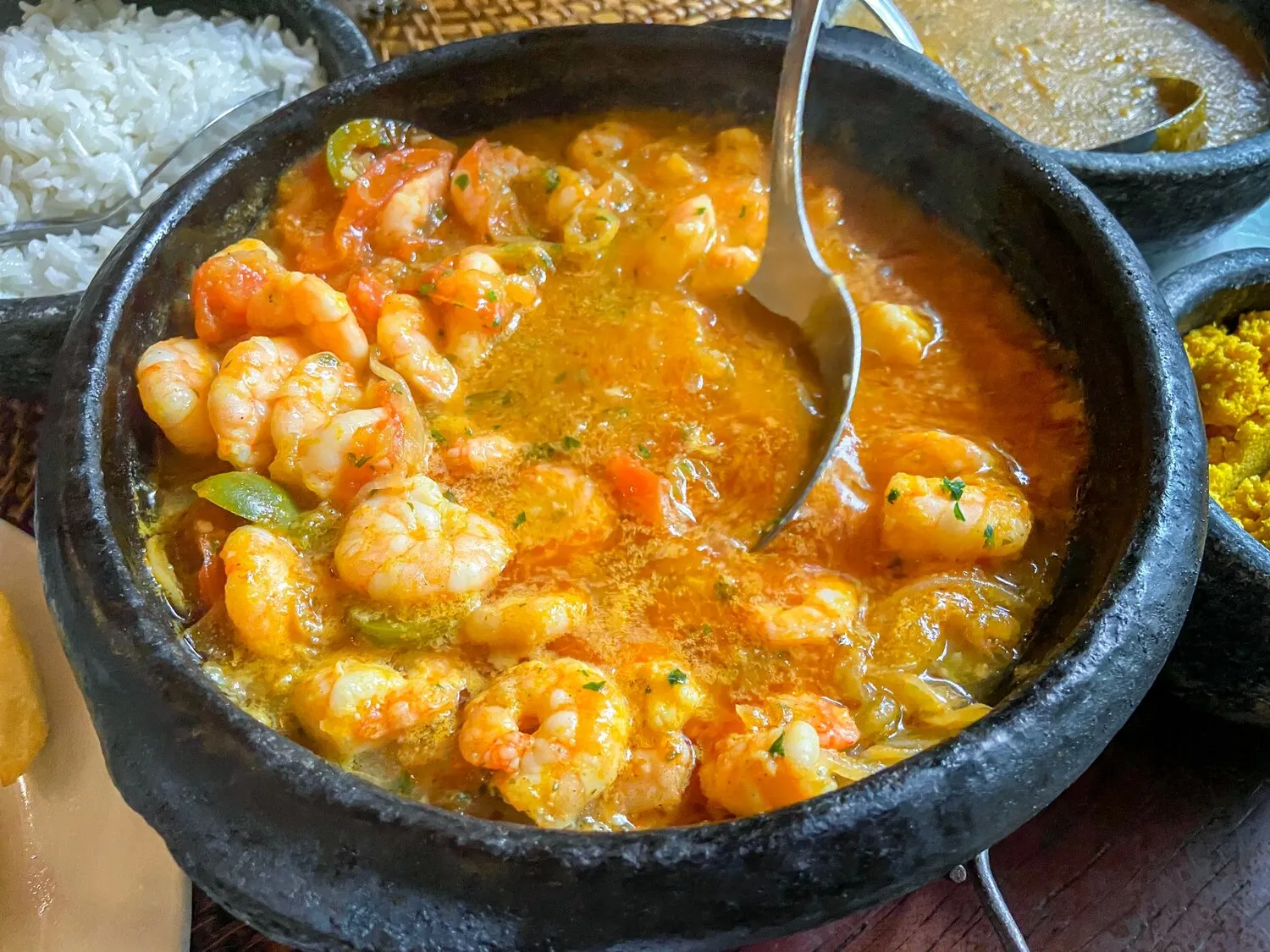
Moqueca de Surubim
Surubim Moqueca, served with rice and pirão.
Nutrition Facts
* The % Daily Value (DV) tells you how much a nutrient in a serving of food contributes to a daily diet. 2,000 calories a day is used for general nutrition advice.
Moqueca's origins trace back to indigenous cooking techniques in Brazil, specifically the use of clay pots to slow-cook seafood with local ingredients. African influences, brought by enslaved people, added further complexity, particularly the use of palm oil (dendê) and coconut milk in some variations. The dish evolved differently in different regions, leading to distinct styles like the Moqueca Capixaba and Moqueca Baiana.
Moqueca is more than just a dish; it represents Brazilian coastal culture and culinary traditions. It's a communal meal often shared with family and friends, embodying the spirit of hospitality and celebration. Its regional variations reflect the diverse ingredients and culinary influences across Brazil.
Regional Variations
Moqueca Capixaba, from Espírito Santo, typically uses annatto seeds for color and flavor and avoids palm oil. Moqueca Baiana, from Bahia, is distinguished by the use of dendê oil (palm oil) and sometimes coconut milk, giving it a richer, more intense flavor and color.
Communal Dining
Moqueca is often served in a clay pot (panela de barro), emphasizing its traditional roots and fostering a sense of shared experience. It's commonly eaten directly from the pot or served onto individual plates with rice and pirão.
Celebratory Dish
Moqueca is often prepared for special occasions, family gatherings, and religious festivities. It represents abundance, prosperity, and connection to the sea and land.
Moqueca de Surubim is a flavorful and aromatic seafood stew. The mild and slightly sweet flavor of Surubim fish is enhanced by the savory depth of tomatoes, onions, peppers, and the richness of coconut milk. Coriander adds a fresh, herbaceous note, while lime juice provides a bright acidity to balance the flavors. When palm oil is used (more common in Moqueca Baiana), it imparts a distinctive earthy and fruity taste and a vibrant orange color.
The core ingredients include Surubim (a large freshwater catfish), tomatoes, onions, bell peppers (usually green and red), garlic, cilantro, lime juice, coconut milk, and olive oil. Some recipes include dendê oil (palm oil), particularly in Bahia. The dish is typically seasoned with salt, black pepper, and sometimes other spices like paprika or chili flakes for a touch of heat. The flavors meld together during the slow cooking process, creating a complex and satisfying stew. The rice provides a neutral base, while pirão, a porridge made from fish broth and cassava flour, adds a creamy and starchy component.
Freshness is Key
Use the freshest Surubim fish available. The quality of the fish significantly impacts the final flavor of the dish. Look for firm, moist flesh and a mild, clean scent.
Layering Flavors
Sauté the onions, garlic, and peppers slowly to build a flavorful base before adding the fish and other ingredients. This allows the vegetables to soften and release their natural sweetness.
Gentle Cooking
Cook the Moqueca over low heat to prevent the fish from drying out and to allow the flavors to meld together gradually. Avoid stirring too frequently, as this can break up the fish.
Acidity Balance
Don't skip the lime juice! The acidity brightens the flavors of the Moqueca and helps to balance the richness of the coconut milk and palm oil (if used).
Explore additional Moqueca dishes and restaurants
Explore MoquecaDiscover top dining spots and culinary experiences in Betim.
Explore BetimLearn more about the food culture, restaurant scene, and culinary heritage of Brazil.
Explore Brazil